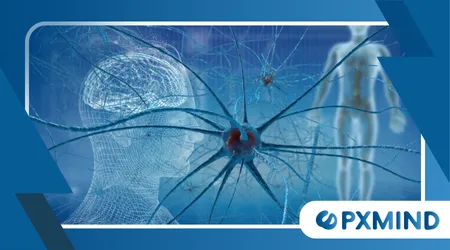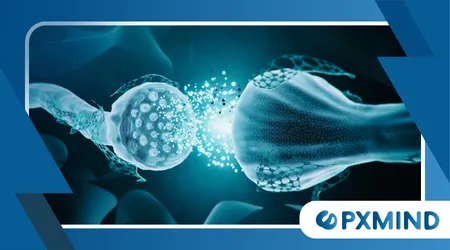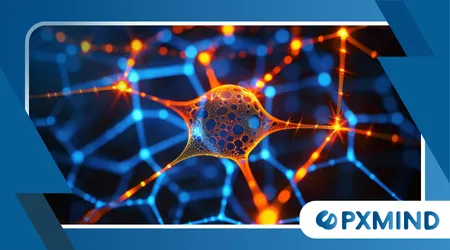Capire i neuroni specchio e la connessione sociale

Neuroni specchioLa capacità di interpretare le azioni, le intenzioni e lo stato emotivo di un altro individuo è essenziale per il funzionamento di una società.
Annunci
Questi neuroni specializzati, scoperti per la prima volta fortuitamente nella corteccia premotoria del macaco dal neurofisiologo italiano Giacomo Rizzolatti e dal suo team nei primi anni Novanta, colmano questa lacuna.
Agiscono come un sofisticato simulatore interno, consentendoci di comprendere immediatamente il "cosa" e spesso il "perché" del comportamento osservato.
Questo processo di mappatura automatica aggira i lunghi calcoli intellettuali, facilitando una risposta sociale immediata.
In che modo i neuroni specchio stimolano l'empatia e la risonanza emotiva?
Il funzionamento del sistema si estende oltre la semplice imitazione dell'azione motoria, avendo un impatto sulla sfera emotiva e cognitiva.
Quando qualcuno sorride, nel cervello dell'osservatore si attivano i circuiti associati a quell'azione.
Allo stesso modo, assistere a dolore o sofferenza innesca un'attività corrispondente in aree come l'insula anteriore e la corteccia cingolata.
Questa risposta neurale condivisa è alla base del contagio emotivo e, di conseguenza, dell'empatia complessa.
Se non proviamo una versione di ciò che l'altra persona sta vivendo, come possiamo entrare veramente in contatto con lei?
Non si tratta di una decisione consapevole, ma di un imperativo biologico fondamentale.
Immaginate un momento in cui un amico racconta con passione un trionfo personale: spesso l'osservatore si ritrova a rispecchiare inavvertitamente la postura dell'amico, chinandosi verso di lui con entusiasmo.
Questa sottile sincronizzazione non verbale, mediata dal sistema, rafforza il rapporto e approfondisce il legame.
Questa comprensione istantanea e incarnata è la base neurologica del "mettersi nei panni di qualcun altro".
Qual è il ruolo del rispecchiamento nell'apprendimento e nella trasmissione culturale?
L'apprendimento attraverso l'osservazione o l'imitazione rappresenta un salto evolutivo fondamentale per gli esseri umani. neuroni specchio fornire il meccanismo per questa replica ad alta fedeltà del comportamento.
Un bambino che impara ad allacciarsi le scarpe osservando un genitore non sta semplicemente elaborando informazioni visive: il suo sistema motorio è già impegnato.
Questa architettura neurale consente la rapida acquisizione di competenze complesse, linguaggio e norme culturali attraverso le generazioni.
Per saperne di più: Come il cervello gestisce il cambiamento e l'incertezza
L'imitazione si estende alle vocalizzazioni e ai gesti, componenti cruciali dell'acquisizione del linguaggio.
Il sistema aiuta a decodificare l'intento dietro specifiche espressioni, andando oltre le parole letterali pronunciate.
Ad esempio, la stessa frase può trasmettere eccitazione o sarcasmo e i segnali facciali e vocali associati vengono elaborati istintivamente.
| Area di connessione sociale | Funzione dei neuroni specchio | Impatto nel mondo reale |
| Empatia/Emozione | Attivazione neurale condivisa (motoria, insula) | Approfondisce i legami interpersonali, il sostegno sociale |
| Imitazione/Apprendimento | Abbinamento azione-osservazione | Facilita l'acquisizione di competenze, la trasmissione culturale |
| Comprensione dell'intenzione | Simulazione dell'obiettivo dell'azione | Consente un efficace coordinamento sociale |

Ci saranno nuove intuizioni sul sistema dei neuroni specchio nel 2025?
La ricerca attuale sta andando oltre la semplice identificazione del sistema, concentrandosi invece sulla sua complessa connettività e modulazione.
Guarda quanto è interessante: Come il multitasking influisce sulle prestazioni del cervello
Una scoperta significativa pubblicata in Comunicazioni sulla natura nel 2024 è stato scoperto che l'attività del sistema dei neuroni specchio (MNS) umano, indicizzata dalla soppressione del ritmo Mu nell'EEG, è significativamente più elevata durante compiti sociali personali e interattivi rispetto all'osservazione passiva (guardare un video).
Ciò sottolinea la specializzazione del MNS per stimoli ad alta rilevanza sociale. L'implicazione è chiara: l'interazione sociale reale, di persona, è neuralmente superiore per quanto riguarda la connessione.
Questa scoperta è in profonda sintonia con i cambiamenti sociali osservati a livello globale.
Mentre le piattaforme digitali offrono connettività, eliminano i dati ricchi e multisensoriali che coinvolgono pienamente l'utente. neuroni specchio.
Secondo una recente meta-analisi dell'Università di Londra, stiamo assistendo a un aumento del 15% dei sentimenti di "vuoto sociale" auto-riferiti tra i giovani adulti che dipendono fortemente esclusivamente dalla comunicazione digitale.
La barriera digitale diluisce la potente e innata sintonia neurale essenziale per una connessione autentica.
L'MNS funziona come un ricevitore radio ad alta fedeltà, sintonizzandosi immediatamente sul trasmettitore (l'altra persona).
Quando il segnale è debole, ad esempio nel caso di una breve interazione basata su testo, la “melodia” neurale è meno precisa, causando incomprensioni.
Questa è una delle intuizioni più recenti e cruciali per neuroni specchio ricerca.
Qual è il potere analogico dello specchio neurale?
Immaginate un'orchestra vasta e complessa in cui ogni musicista è dotato di un proprio direttore d'orchestra interno in miniatura.
Questo direttore d'orchestra alza istintivamente la bacchetta e inizia a "suonare" le note semplicemente guardando i gesti del direttore d'orchestra.
Guarda qui: La psicologia dell'autocompassione
Non emettono alcun suono, ma la simulazione interna è perfetta. L'azione del conduttore principale viene immediatamente mappata sulla potenziale azione di ogni musicista.
Questo è il genio del neuroni specchio; creano un coro istantaneo e silenzioso di potenziale azione ed emozione.
Permettono a un gruppo di menti diverse di diventare, momentaneamente, un tutto sincronizzato, gettando le basi per un comportamento cooperativo.
Perché un sistema attivo di neuroni specchio è fondamentale per la coesione sociale?
Le implicazioni di un MNS robusto si estendono all'armonia sociale. La capacità di simulare la prospettiva di un altro, facilitata da neuroni specchio, si oppone direttamente alla polarizzazione.
Quando riusciamo a mappare automaticamente lo stato emotivo dell'"altro", diventa molto più difficile disumanizzare o liquidare la sua esperienza.
Questo fondamentale circuito neurale è il motivo per cui vedere una folla esultare suscita gioia o per cui una smorfia condivisa dopo un pasto cattivo crea immediatamente cameratismo.
Il sistema è l'infrastruttura invisibile di "noi". Siamo fatti per connetterci e neuroni specchio dimostrarlo.

L'architettura neurale della connessione
Lo studio di neuroni specchio rimane uno dei settori più dinamici della neuroscienza moderna.
Queste cellule sono molto più di un semplice riflesso: rappresentano un sofisticato sistema neurale, perfezionato dall'evoluzione, dedicato alle connessioni sociali.
Dal semplice gesto di copiare un gesto della mano alla profonda profondità del dolore umano condiviso, il potere dello specchio struttura l'intero mondo sociale.
Mentre ci muoviamo in una società sempre più digitale e spesso frammentata, è fondamentale comprendere questo fondamentale imperativo biologico di presenza incarnata e simulazione reciproca.
Il cervello umano, dotato di questo sistema miracoloso, conferma che siamo fondamentalmente predisposti alla convivialità.
Domande frequenti
Dove si trovano esattamente i neuroni specchio nel cervello umano?
Sebbene il termine si riferisca a un sistema più ampio, il nucleo del sistema dei neuroni specchio umani è localizzato principalmente nel giro frontale inferiore (parte dell'area di Broca, coinvolta nel linguaggio) e nel lobulo parietale inferiore.
Anche altre aree, come il solco temporale superiore e l'insula, sono coinvolte, soprattutto nel rispecchiamento emotivo.
I neuroni specchio funzionano quando sento un'azione e non solo quando la vedo?
Sì. È stato scoperto che una sottoclasse di queste cellule, spesso chiamate "neuroni specchio audiovisivi", si attiva sia quando viene eseguita un'azione sia quando l'osservatore sente il suono caratteristico associato a tale azione (ad esempio, il suono di una nocciolina che si rompe, senza vedere l'azione).
Esiste un legame tra la disfunzione dei neuroni specchio e i disturbi sociali?
La ricerca suggerisce che le differenze nell'attività del sistema dei neuroni specchio potrebbero essere implicate in condizioni caratterizzate da deficit sociali e comunicativi, come il disturbo dello spettro autistico (ASD), sebbene non siano considerate l'unica causa.
La ricerca continua a esplorare la natura esatta di questa correlazione.
Posso migliorare consapevolmente la funzione dei miei neuroni specchio?
Si ritiene che impegnarsi in situazioni sociali interattive e reali (partecipare a sport di squadra, ballare, suonare musica con altri o semplicemente avere conversazioni mirate di persona) rafforzi i percorsi neurali coinvolti nel sistema nervoso centrale (MNS), migliorando l'intonazione sociale e l'empatia.
++ Il ruolo dei processi di rispecchiamento nella cognizione sociale
++ Il ruolo dei neuroni nella comprensione della cognizione sociale e dell'empatia
